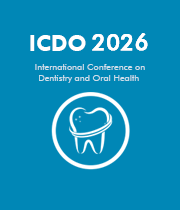Title: A Novel Fluoride Coating for Early-stage Caries Prevention
Abstract:
Layered double hydroxide, fluoride release, composite, early-stage caries, prevention.
To develop a layered double hydroxide – polycarboxylic acid composite coating and to study its ability to adhere to hydroxyapatite (HA) and release fluoride at a controlled level. Maintaining a low therapeutic level of fluoride in the oral environment to prevent early-stage caries is a necessity; fluoride releasing dental coatings incorporating LDH, applied via mouthwash or toothpaste, have the potential to address this.
Zinc containing layered double hydroxide was synthesised using a co-precipitation technique while incorporating two different polycarboxylic acid polymers in situ, characterised using powder X-ray diffraction (pXRD). The resulting powder was allowed to absorb fluoride in a solution of 1500ppm sodium fluoride (NaF) and then one coat was applied onto hydroxyapatite discs using a brush. Once applied, the discs were rinsed in de-ionised water (DW) twice, to remove any excess polymer-LDH. The coated samples underwent 3 cycles of demineralisation in acetic acid solution (pH 4, 1M for 30seconds) and remineralisation in artificial saliva solution (for 3 hours), both at 37°C. The discs were anlaysed in between each cycle, using a scanning electron microscope (SEM) and energy dispersive spectroscopy (EDS). The fluoride released in each solution was measured using fluoride ion selective electrodes (NICO2000, precision ±2%).
LDH incorporated in two polycarboxylic acid polymers were successfully synthesised, as confirmed using pXRD. Both coatings remained attached on the HA surface and released fluoride in both demineralising and remineralising solutions during all cycles. The first coating released significantly higher amounts of fluoride (~8.22± 2.88ppm and ~1.27±0.31ppm in remineralisation and demineralisation solutions, respectively), in comparison to the uncoated control (0.05± 0.003ppm and 0.04± 0.005ppm). The second coating released ~4.66±0.19ppm and 0.81±0.04ppm in remineralisation and demineralisation solutions, respectively. EDX also confirmed the presence of fluoride on the coatings.
LDH was successfully attached to HA discs using polycarboxylic acids and was capable of releasing fluoride. Therefore, it has the potential to prevent early stage caries via a controlled release of fluoride over many acid challenges.




